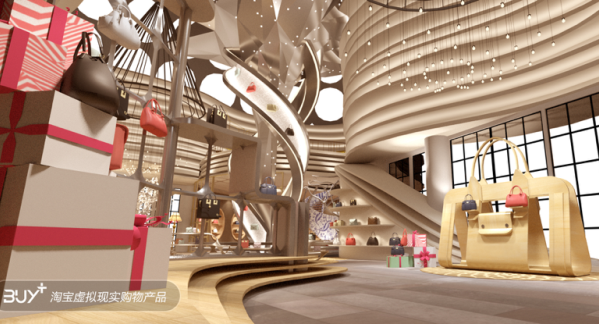
If there’s anyone who doubts that virtual reality and augmented reality are the next dominant trends in technology, they’re probably spending too much time IRL and not enough online.
Because only those people who are truly unplugged could have missed the global craze right now that is Pokémon Go. In just a couple of weeks, the AR game, where players chase virtual creatures from the popular Japanese franchise around real-world environments, has become the most popular mobile game ever released.
According to Goldman Sachs, the global VR and AR market will reach $110 billion by 2020. And while much of the attention they have drawn so far does indeed center on the gaming industry, there are companies in other sectors eyeing the technologiesas well. China’s Alibaba Group is seeing strong potential for e-commerce in particular and over the past year has begun to position itself in a market that’s expected to reach $8.5 billion in China in four years. On Friday, the company took another step when its “Buy+” virtual store made its public debut at the Taobao Maker Festival in Shanghai.
“As users continue to engage with the platform in more meaningful ways, we are fostering next-generation consumption features, such as virtual reality, to transcend the overall user experience,” Alibaba Chief Marketing Officer Chris Tung said in a statement.
Buy+ allows consumers to shop in a virtual environment with 360-degree views using a VR headset and two hand controllers. They can browse products from bags to shoes to lingerie, and even have virtual models showcase the apparel and accessories on a catwalk. Shoppers can then cycle through different features that offer more detailed product information and the ability to add an item to their shopping cart or purchase it. Buy+ is still in beta, however, and Alibaba did not announce a date for its release.
While the predictions for VR in China are lofty, the sector is still in its earliest stages there. According to data from Beijing-based research firm Analysys International Enfodesk, the total market including AR came in at just $28.9 million last year, although that was up fourfold from 2014. The market is on track to soar 372 percent to $136.5 million this year, though still far below the billions of dollars it is eventually expected to generate. But that hasn’t stopped Alibaba from pushing forward with its VR strategy anyway.
Earlier this year, Alibaba led an investment round in U.S. mixed-reality company Magic Leap. Mixed reality is just a degree of difference away from augmented reality. Where virtual reality is a fully digital environment, augmented reality overlays digital content in the real world (think Pokémon Go). Mixed reality, however, allows digital content to interact with the real world. For example, a sun created for a mixed-reality environment is able to cast light on and create shadows from different real-world objects in that environment.

During a keynote presentation at the Taobao Maker Festival, Magic Leap CMO Brian Wallace showed a mixed-reality environment with an expecting mother browsing lamps for a baby’s bedroom. The mother placed different children’s themed lights on a bureau to see how they looked before choosing one and purchasing it through the MR software. The detail with which the digital objects in the environment are rendered will provide a better shopping experience for consumers on Alibaba’s retail platforms, according to Wallace.
“It’s as real as a physical object,” he said.
Brands selling through Alibaba have already begun to use VR to engage shoppers as well. In May, U.S. consumer goods giant Procter & Gamble launched a VR campaign around the 5/20 holiday. The date when spoken in Chinese sounds like “I love you,” which prompted P&G to create a virtual environment where consumers could interact with a virtual boyfriend or girlfriend. Chinese actors Yang Yang and Dilireba played the roles, respectively, serving consumers breakfast in bed and, of course, pitching them products such as Rejoice shampoo, Crest toothpaste and Pampers diapers. Swiss food conglomerate Nestle held a similar VR marketing effort taking consumers on a ride in a Tmall-branded van through what it called the “Planet of Wonders,” where they could also interact with the company’s products.
To further facilitate virtual reality-based shopping on its sites, Alibaba in March launched its own VR research facility at its headquarters in Hangzhou, China. In a brief released to media during the Taobao Maker Festival, Alibaba said the GnomeMagic Lab will develop both VR and AR features to complement its existing online retail businesses. The lab has already finished hundreds of models for different products sold on its platforms, and Alibaba plans to develop standardized tools so that brands and merchants can build their own 3D inventories.
“The long-term goal is to enable businesses to set up VR stores as quickly and easily as they can a web page,” Alibaba said.
Additional reporting by Megan Tung.





